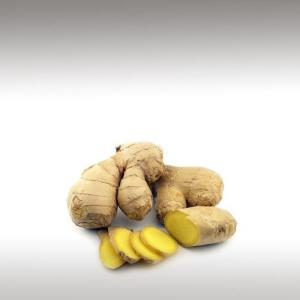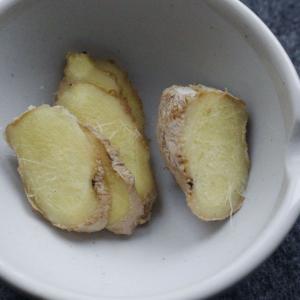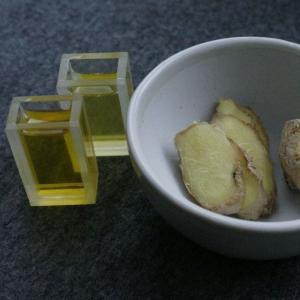
GINGER ESSENTIAL OIL (ZINGIBER OFFICINALE) - ESSENTIAL OILS

BASE / GENERAL DATA
Information submited: May 7, 2015 Modified: March 13, 2018 By: OperaDreamhouse
Botanical Name: Zingiber officinale
Common Method of Extraction: Steam distillation
Part Typically Used: Dried Root
Color: Golden yallow
Consistency: Thin
Perfumery Note: Middle
Strength of Initial Aroma: Spicy, warm, woody, with a deep earthy undertone.
Ginger is a flowering plant in the family Zingiberaceae whose rhizome, Ginger root or Simply Ginger. It is a herbaceous perennial which grows annual stems about a meter tall bearing narrow green leaves and yellow flowers. Every year it shoots up a stalk with narrow spear-shaped leaves, as well as white or yellow flowers growing directly from the root.
Ginger is indigenous to southern China, and was spread eventually to the Spice Islands, other parts of Asia and subsequently to West Africa and the Caribbean.
Ginger was exported to Europe via India in the first century AD as a result of the lucrative spice trade. India is now the largest producer of Ginger. Ginger comes from a Sanskrit word “Srngaveram” meaning “Horn Root”.
Ginger was one of the first products to travel the spice route from Asia to Europe, where both the Greeks and Romans made extensive use of it.
The aromas of the dried root distillation and fresh root distillation are quite different. The fresh root oil has a bright note in comparison, where the dried root oil has the traditional grounding rooty notes to the aroma. Both are very pleasant.
Ginger essential oil has an aroma that is a medium to strong scent that is warm, woody and spicy. It has undertones of Lemon and pepper with a middle to base note. It is a stimulating and uplifting aroma.
West African women in Senegal weave belts of Ginger to bring back their partners sexual interest.
Chemical strucute:
The essential oil has various chemical constituents including the following: a-pinene, camphene, b-pinene, 1,8-cineole, linalool, borneol, y-terpineol, nerol, neral, geraniol, geranial, geranyl acetate, b-bisabolene and zingiberene.
Common Method of Extraction: Steam distillation
Part Typically Used: Dried Root
Color: Golden yallow
Consistency: Thin
Perfumery Note: Middle
Strength of Initial Aroma: Spicy, warm, woody, with a deep earthy undertone.
Ginger is a flowering plant in the family Zingiberaceae whose rhizome, Ginger root or Simply Ginger. It is a herbaceous perennial which grows annual stems about a meter tall bearing narrow green leaves and yellow flowers. Every year it shoots up a stalk with narrow spear-shaped leaves, as well as white or yellow flowers growing directly from the root.
Ginger is indigenous to southern China, and was spread eventually to the Spice Islands, other parts of Asia and subsequently to West Africa and the Caribbean.
Ginger was exported to Europe via India in the first century AD as a result of the lucrative spice trade. India is now the largest producer of Ginger. Ginger comes from a Sanskrit word “Srngaveram” meaning “Horn Root”.
Ginger was one of the first products to travel the spice route from Asia to Europe, where both the Greeks and Romans made extensive use of it.
The aromas of the dried root distillation and fresh root distillation are quite different. The fresh root oil has a bright note in comparison, where the dried root oil has the traditional grounding rooty notes to the aroma. Both are very pleasant.
Ginger essential oil has an aroma that is a medium to strong scent that is warm, woody and spicy. It has undertones of Lemon and pepper with a middle to base note. It is a stimulating and uplifting aroma.
West African women in Senegal weave belts of Ginger to bring back their partners sexual interest.
Chemical strucute:
The essential oil has various chemical constituents including the following: a-pinene, camphene, b-pinene, 1,8-cineole, linalool, borneol, y-terpineol, nerol, neral, geraniol, geranial, geranyl acetate, b-bisabolene and zingiberene.

SPIRITUAL PRACTISES DATA

MEDICINE / HEALTH DATA

BEAUTY / COSMETICS DATA

FOOD / COOKING DATA
COMMENTS
No comments.




